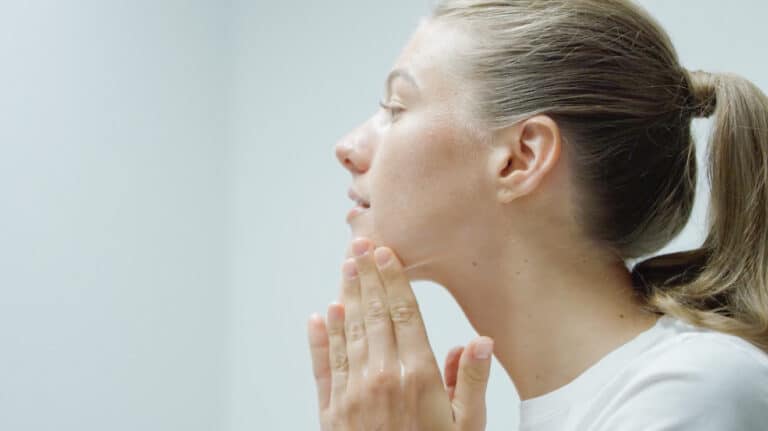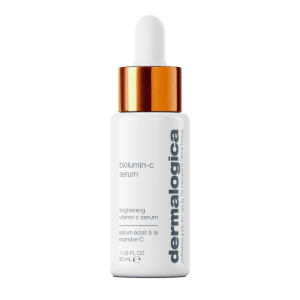how skin ages
Here’s a breakdown of what happens to your skin while you’re busy living.
As skin ages, it experiences a slowing of the natural processes which help maintain youthful qualities such as firmness, tautness and radiance. Visible signs of skin aging (spots, fine lines, wrinkles, etc.) appear as a result of our skin’s natural defense mechanisms, as well as slower cell renewal, turnover, activity and recovery.
Our skin starts to age as soon as we are born, but we don’t typically think of it as aging until it starts to show dullness, spots, fine lines, wrinkles and loose, crepey texture. What causes these visible signs of aging is rather complex and varies according to your genetics and your exposome (lifestyle + environment). These are the key events:
As early as our 20s(!), unhealthy lifestyle habits, environmental damage and constant UV exposure begin compromising skin’s structural integrity.
Our cell defenses start to weaken in the face of free radicals, and our natural ability to fight off skin damage declines.
Cell renewal and turnover rates also naturally start to slow, diminishing skin radiance.
In our 30s, collagen (which keeps skin firm) and elastin (which keeps skin bouncing back) degrade, resulting in visible wrinkles.
Cell renewal and turnover continue to decline, leading to a duller complexion and uneven skin tone.
Some cells can even become inactive, or turn into “zombies,” giving rise to damaging inflammatory toxins that accelerate the appearance of skin aging.

By our 40s, skin appears thinner and its naturally-protective barrier lipids are not as pronounced. Dehydration can be an issue. Depending on hormonal activity, unusual activity may appear in skin from uneven skin tone to adult acne. More prominent signs of skin aging can also appear, such as dark spots and significant dullness.
After our 50s, our barrier lipid layer lessens, leading to less efficient moisture retention and more potential for sensitivity and dehydration. Chronic stress and inflammation both inside and outside of the body delays skin recovery – leading to lasting marks and longer healing times. By now, skin can show prominent wrinkles, fine lines and discoloration.
The secret to healthy-looking skin at every age
To get a healthy-looking glow at any age, it’s imperative to evolve your skin care routine according to your lifestyle and environment. Adjustments are often necessary to account for a change in climate, health status or new skin care goals. Talk to a Dermalogica skin therapist whenever you’re experiencing change in your skin for tips on how to proceed.

